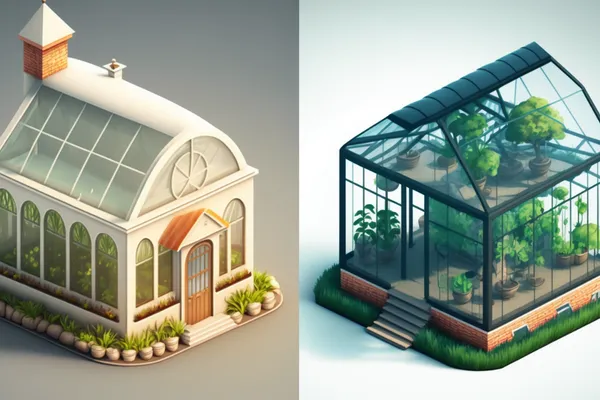
Luxury Greenhouse vs. Conservatory: A Comprehensive Comparison Guide
Greenhouses and conservatories are incredibly fascinating spaces, as different in design and purpose as night and day. At first glance, they look like the same structure with just different types of glazing; however, further exploration reveals a few distinct differences between greenhouses and conservatories.
Location
A greenhouse is an outdoor structure often made of aluminum and polycarbonate panels, allowing for an optimal environment for gardening and horticulture. To maximize sunlight and heat absorption, greenhouses require an optimal location. Oftentimes, the orientation of the greenhouse relative to the sun and the seasonal changes of the sun’s path is critical to optimizing horticulture production. Freestanding conservatories, although similar to greenhouses, are meant to operate as multifunctional outdoor spaces without the dedicated focus of horticulture production. Conservatories can be located in a variety of locations that are best suited for the owner's needs and preferences. While location and passive heating are factors to consider when selecting the location of a conservatory, finding the best location on the property that meets all the intended interests of its use is as important.
Design
Modern greenhouses are typically made of aluminum framing and polycarbonate panels, allowing diffused light for the plants to provide an optimal environment for their growing needs. Conservatories often offer features beyond plant protection from the elements. Conservatories are permanent structures comprised of architectural grade materials and often tempered glass to maximize direct sunlight and their aesthetic appeal, allowing users to showcase elements such as flooring, furniture, artwork, plantlife, and sometimes even swimming pools or hot tubs. These elements provide owners with a far more dynamic outdoor structure for a variety of uses.
Size
While some greenhouse manufacturers do provide custom sizes, most residential greenhouses are purchased as kits and therefore manufactured in a standard size. Additionally greenhouses are typically engineered with a lower roof profile to minimize heating and cooling requirements since their primary inhabitants are plants. Conservatories, being a much more substantial and permanent element to a property are almost always customized to fit the owners desired location and use case. As the intended primary users of conservatories are people, the detail and grandiosity of their designs are dramatically different than greenhouses. From Victorian to English and Modern designs, conservatories can be found with a number of impressive perimeter and roof profiles designed to increase both the exterior aesthetic and the interior experience.
Purpose
Dedicated gardeners typically use greenhouses with an array of tools and equipment to attend to their plants environmental needs. These items include automated water sprinklers and lighting and shading systems to help gardeners optimize the conditions for their plants' growth. While conservatories can often include similar elements as greenhouses, they typically have a balance of both plants and other living elements, creating a space that can be used for gardening, relaxation, studying, entertaining, art creation, and even work.
